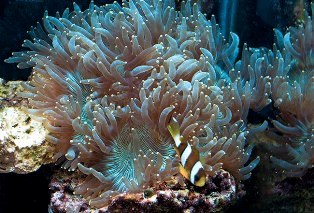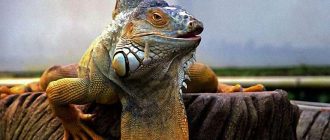Interested in the Australian elegance coral? Learn more about the wonder coral known as Australian elegance corals…
This wonder coral has a distinct green tentacle spread that ends with bright pink tips. The most beautiful of Australian elegance corals is the Catalaphyllia. There are different and individual polyps on the coral, which join together and create a colony with V-shaped valleys, which are very wide. Each of the polyps ends in a mouth, which has an oral disc striped and surrounded with different tubular tentacles, which are colored and bright. The mouth is utilized to catch food. The range starts from the Indian and Pacific oceans, in the middle at Vanuatu and Seychelles all the way through southern Japan and northern Australia.
The Natural Habitat for Elegance Coral
The Australian wonder coral or elegance coral develop in temperate waters and tropical waters. These are ideally turbid and sheltered to allow them grow undisturbed. The biology and marine life history of the Australian elegance coral and much of its history is unknown even today. This species is both colonial and free living, which is very unique. As is the case with every coral, the Australian wonder coral also maintains a relationship with the algae called zooxanthellae, which thrive in the tissues of the Australian elegance coral. It feeds all the nutrients to the wonder coral and produces them through the process of photosynthesis, which is conducted using sunlight.
The Australian wonder coral is responsible for providing access to sunlight and maintaining protection for the algae. The Australian wonder coral uses its polyps to capture prey in its tentacles.
Threats To The Australian Elegance Coral
Coral reefs are under pressure on a global level and the Australian elegance coral reefs also suffer the same catastrophes. With the increased pressure on coastal areas and access of human population into different areas, the population of elegance coral has been greatly disturbed. Technology and infrastructural development, which includes dynamite and mechanical dredging has resulted in the poisoning of the coral reefs, which has destroyed substantial numbers of their population. Any procedure designed to increase the fishing catch or to utilized the seabed for extraction results in the destruction of the coral reef.
Some of the largest destruction caused by human activity was suffered by the 5000 km² of coral reef in western Japan in the area known as Kushimoto. When the marine port was established at this location the entire area around the island of Sesoke in Japan was destroyed for the construction of the shoreline and port. This resulted in a devastation of the elegance coral. The destruction of this coral is compounded by the use of farming and harvesting for live coral trade. It looks beautiful with the green shimmering tentacles and polyps and it is utilized extensively to decorate and add charm to a home or commercial aquarium. It is actually one of the more popular live coral species and is traded widely, especially in the last two decades.
The efforts towards the conservation of the populations of Australian elegance coral attempted to limit the amount of trade in this coral. Marine protected areas will be populated with the species of Australian elegance coral in order to let the population and quantity of this live coral thrive and grow without becoming extinct due to destruction and harvesting.





